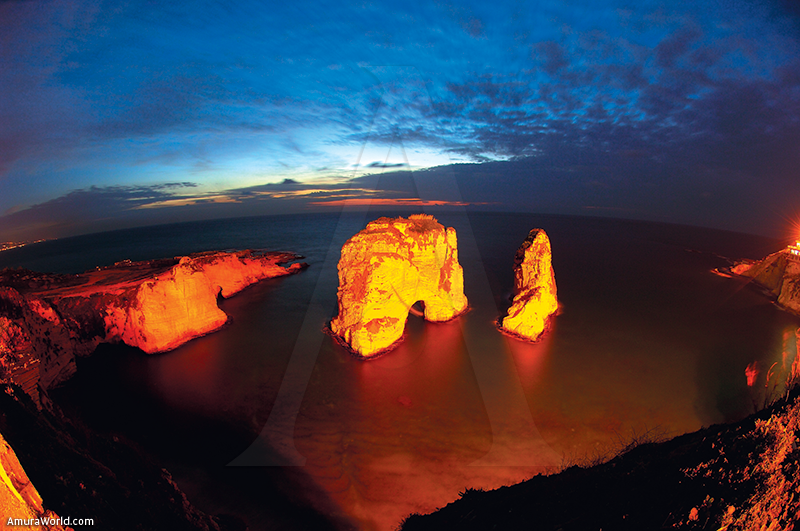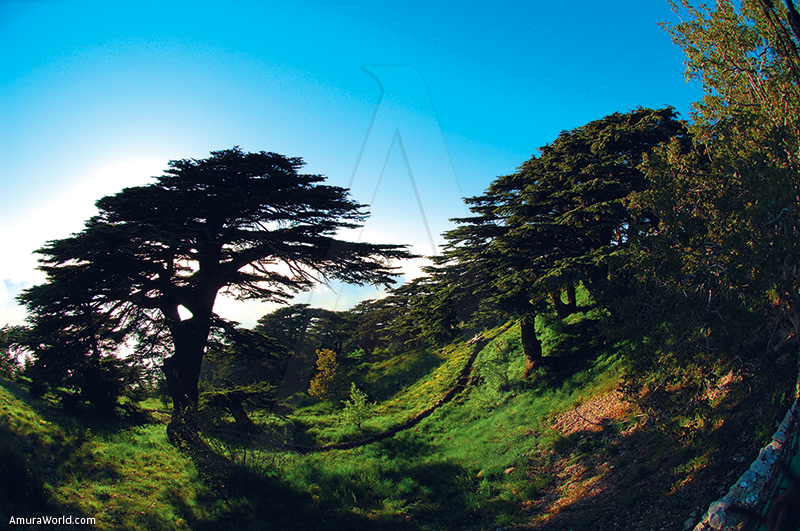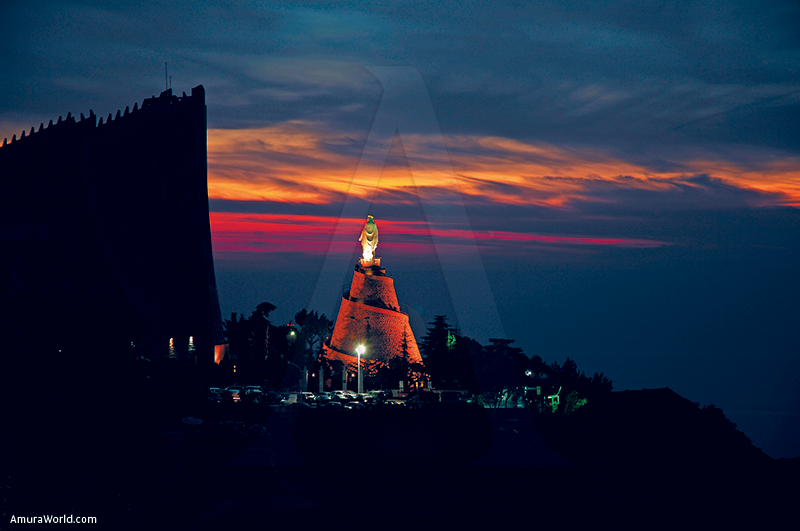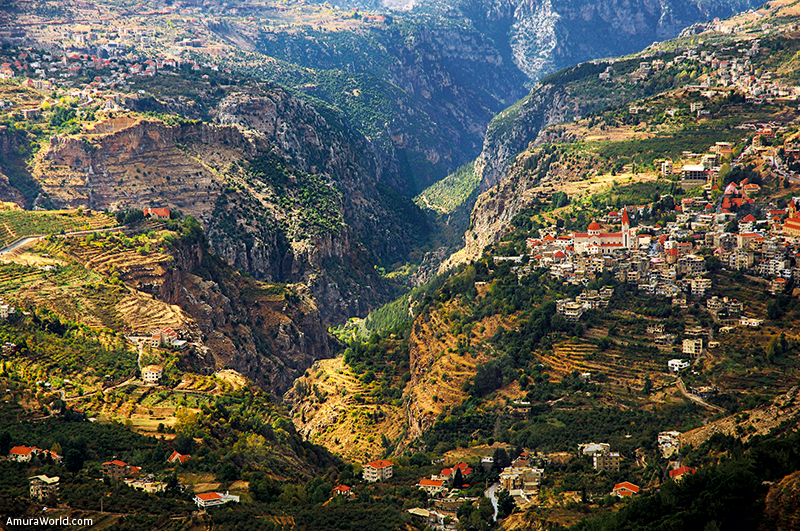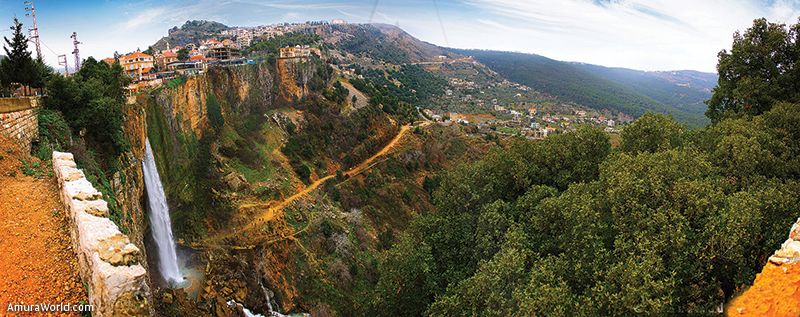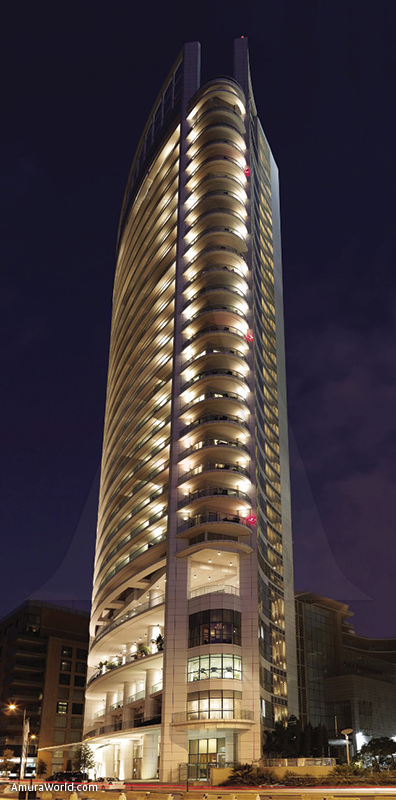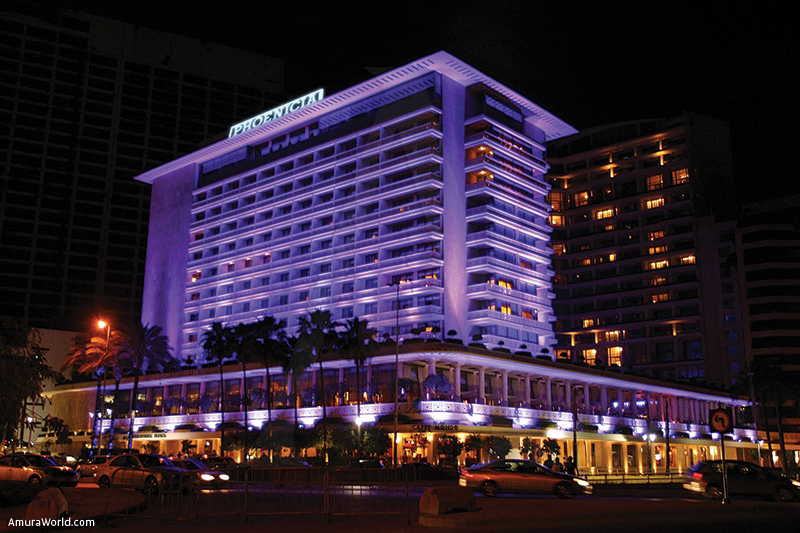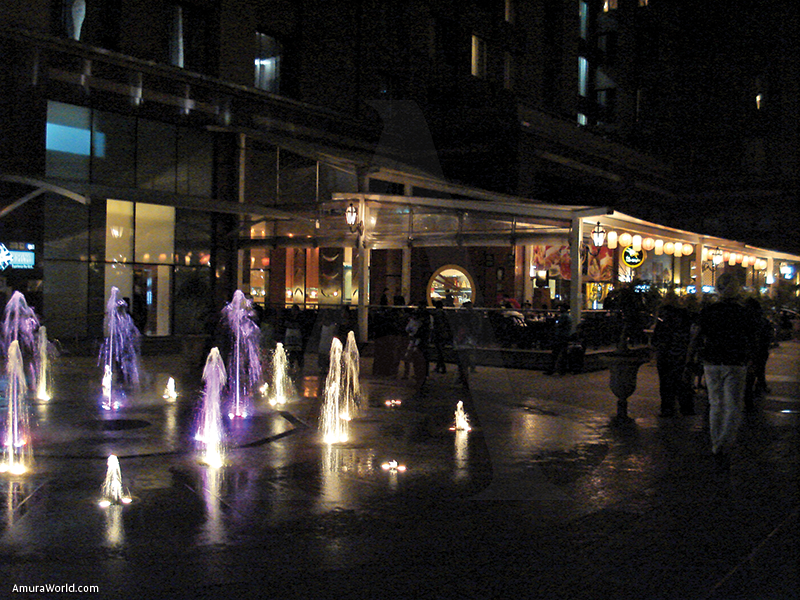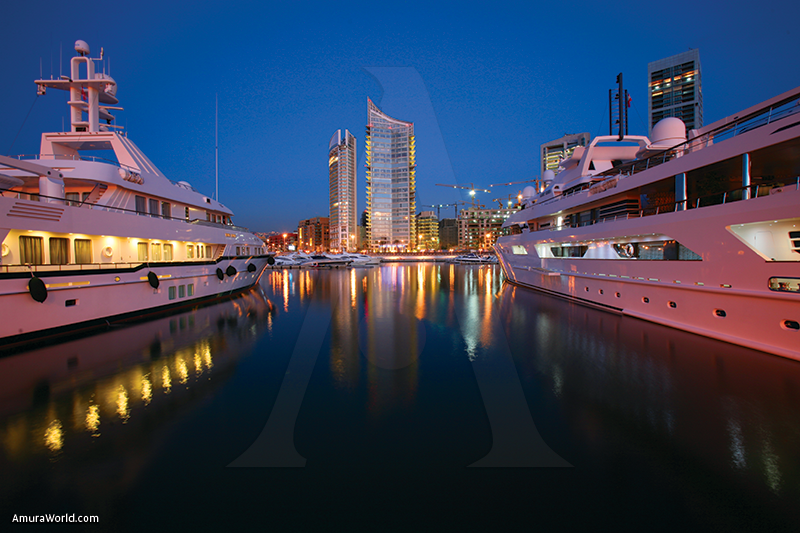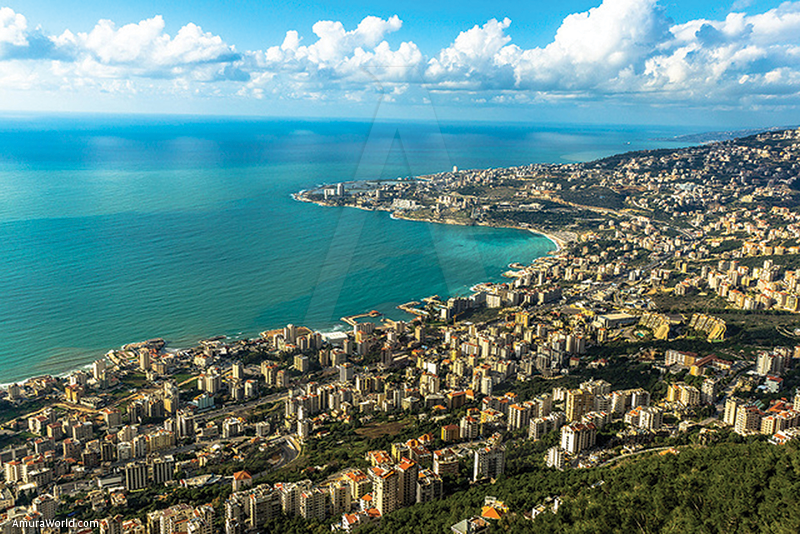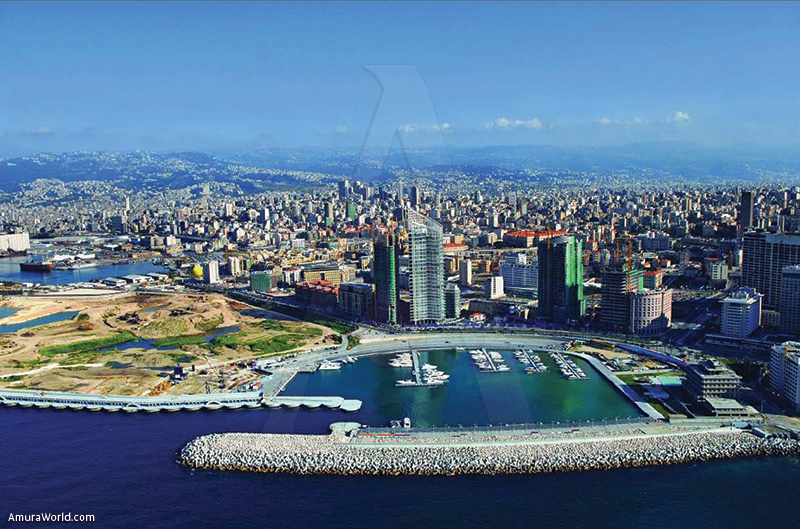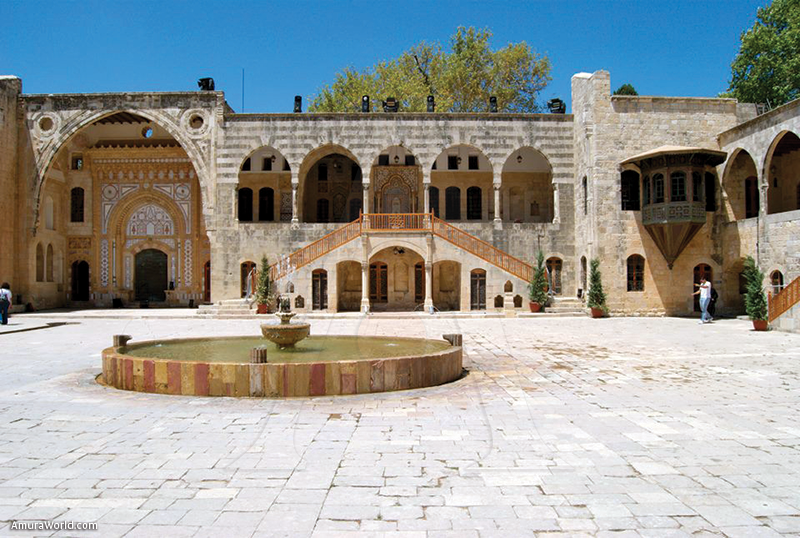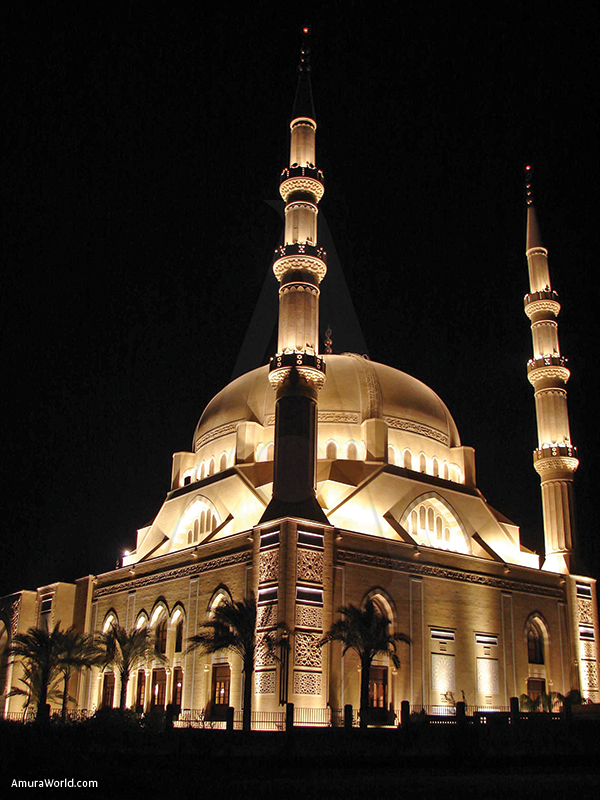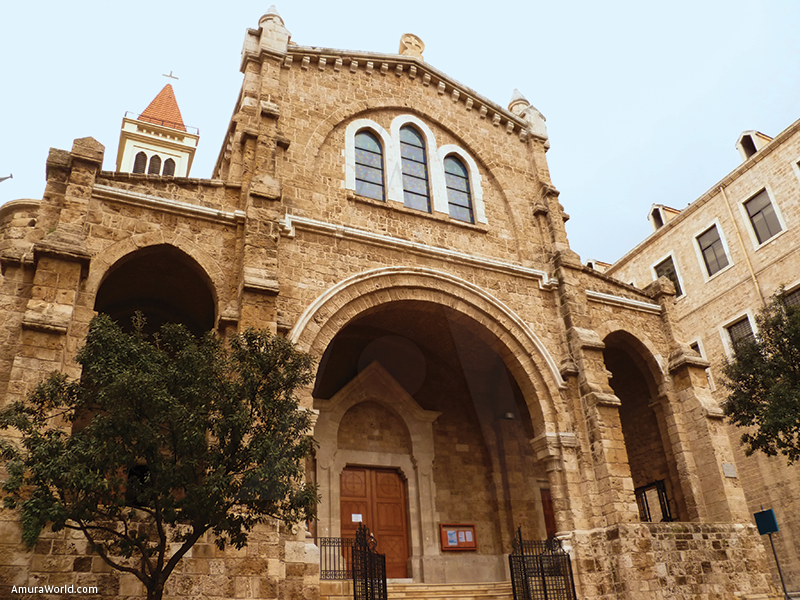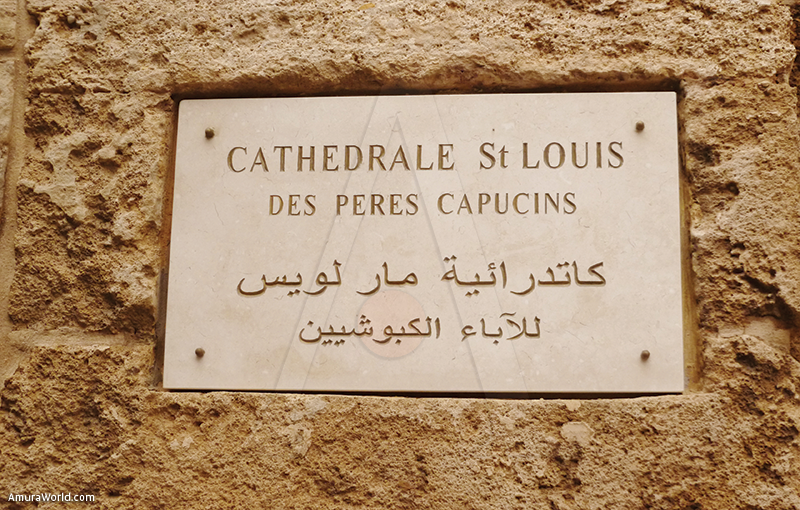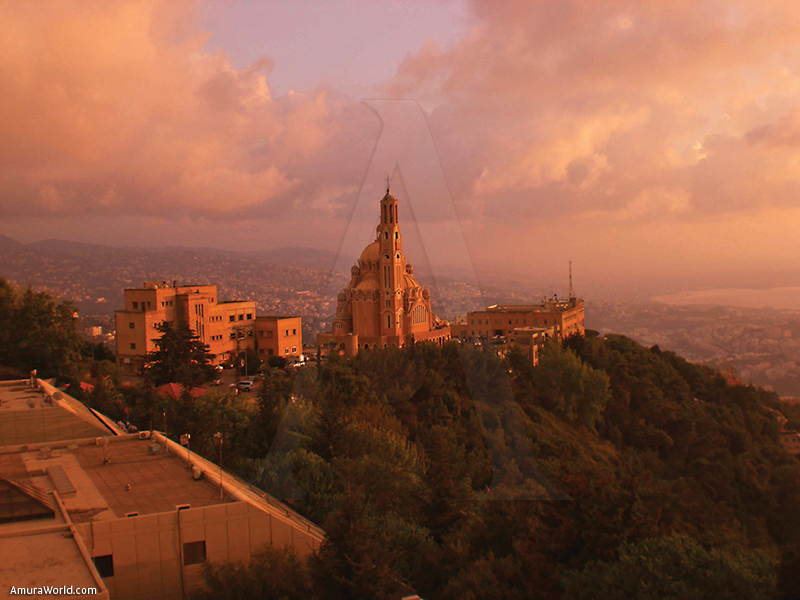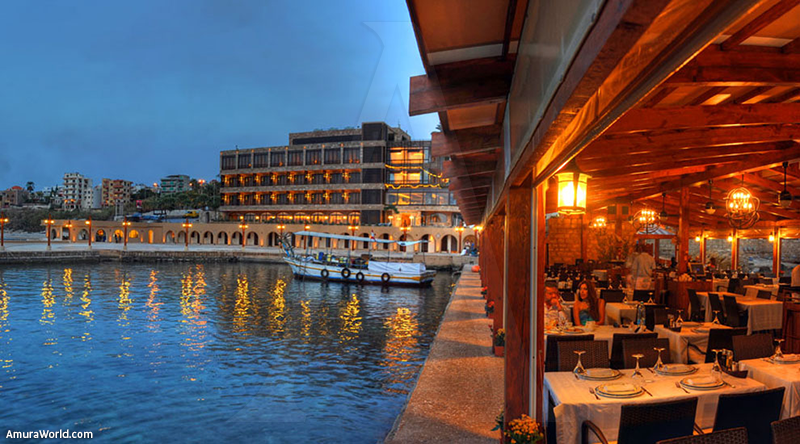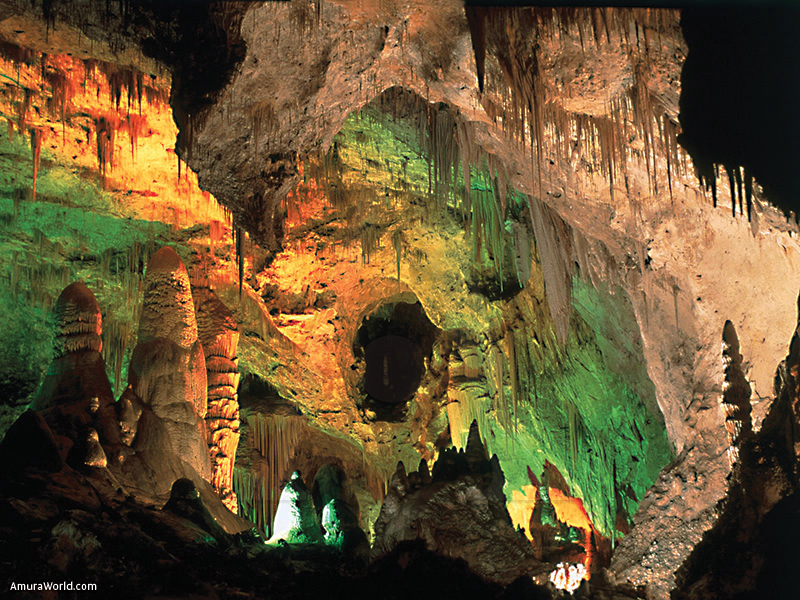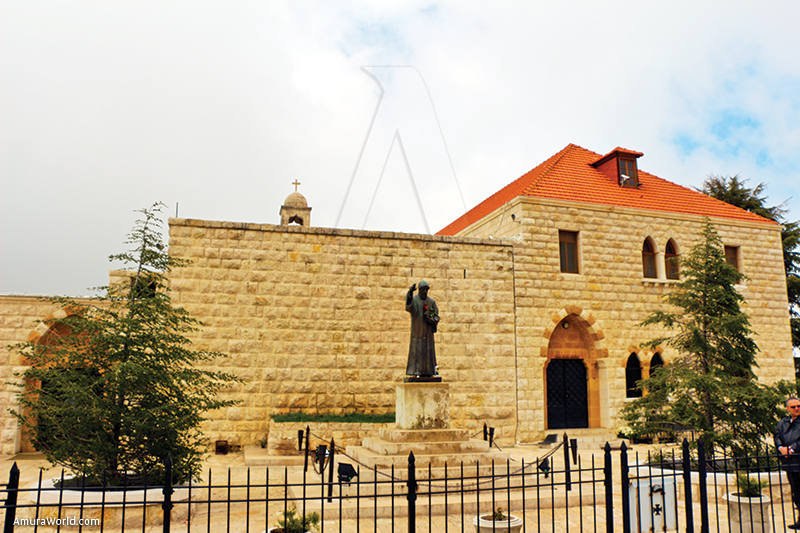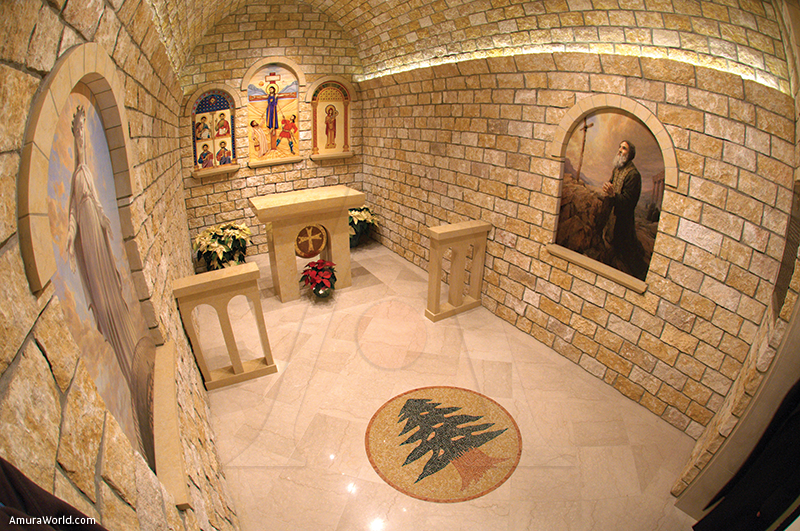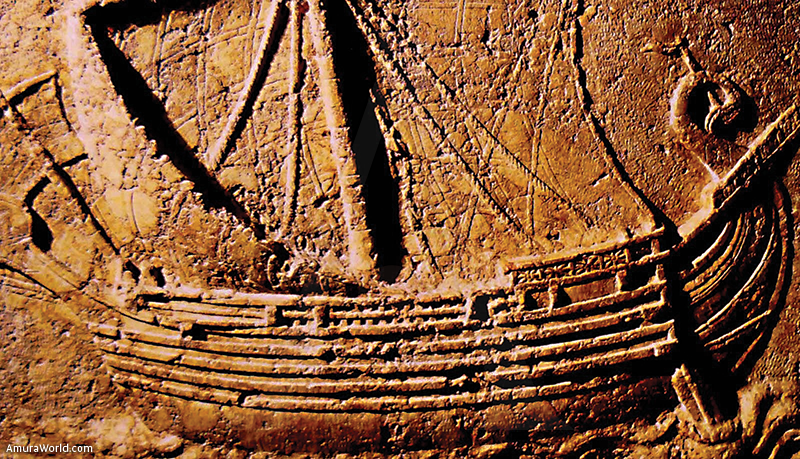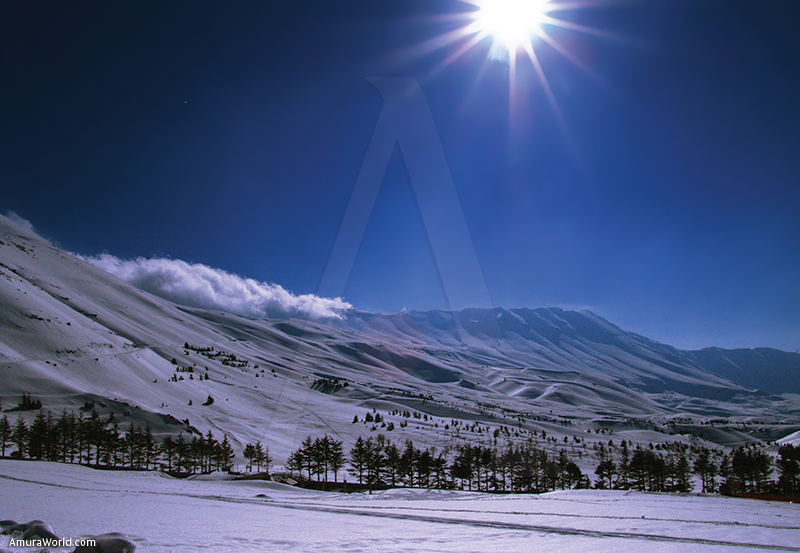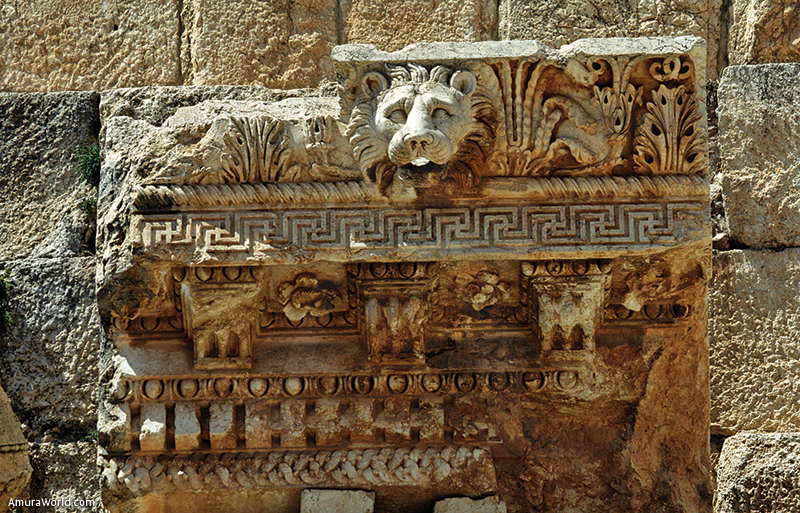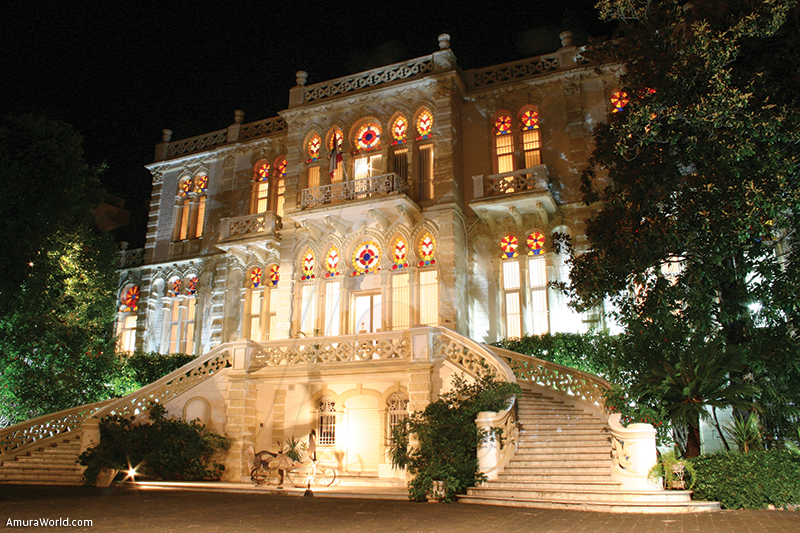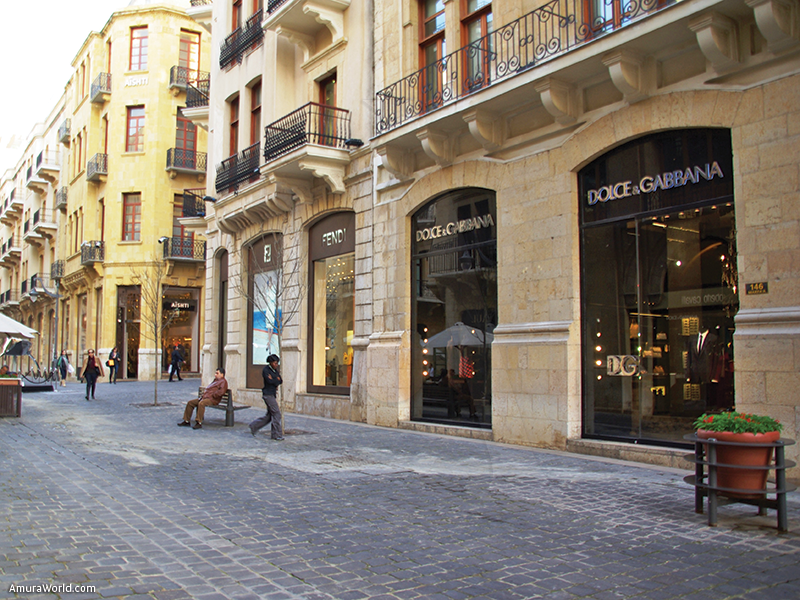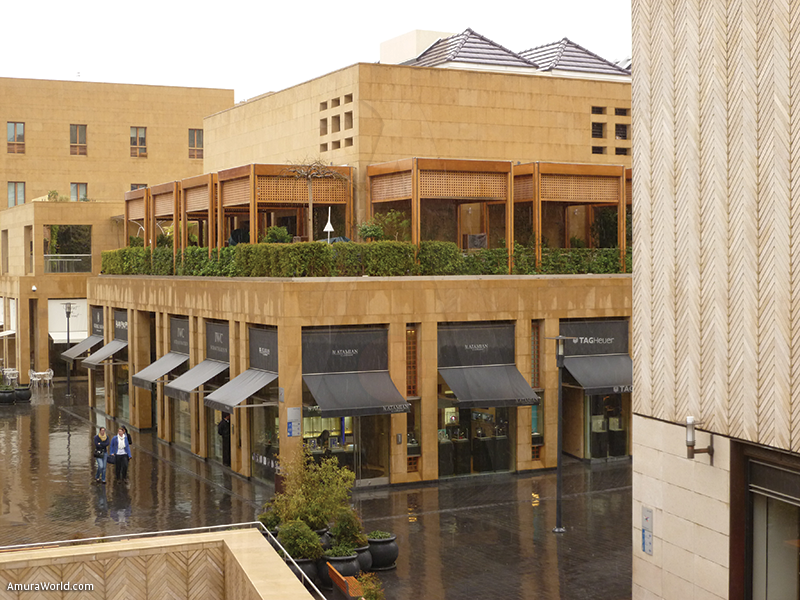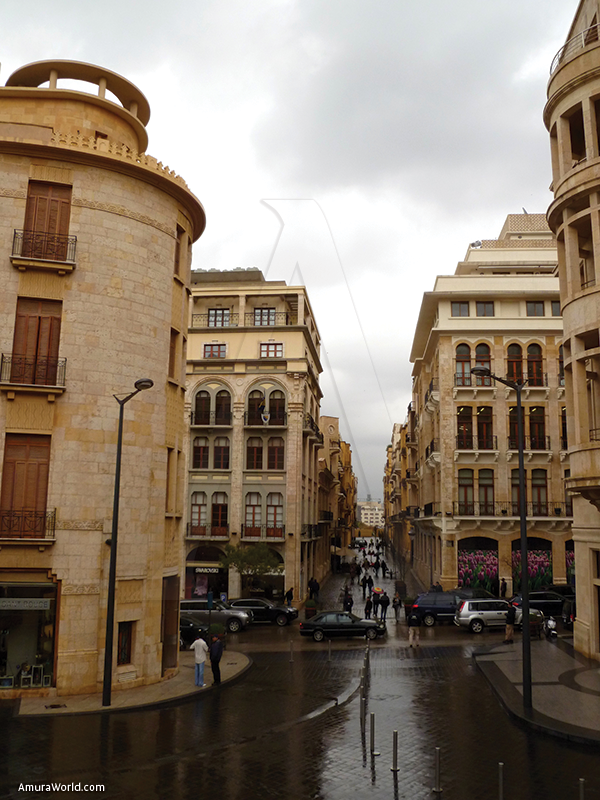A message to the world
The culture in Lebanon, ever since the Phoenicians, has been realist, humane and universal, comparable to a symphony that acquires through conscious its power of expression. This character made way, through migratory currents, a dialogue with the five continents, leaving the doors open of its millenary tradition to integrate their minds to the ends of the world. On the other hand, it is currently a country of great tourist appeal, with archeological traces, incredible gastronomy and diversion for any taste and age.
The Phoenicians from Cananea enriched their previous historic domains; even in their work, The Odyssey, Homer spoke of the men and merchants of Sidon, as well as of the classic Greek literature as the Phoenician stories and India or in The Science of the Ancient Phoenicians by Hieronimo, King of Syracuse (216 a 214 a.C.), the privative side of their culture has been studied. If this happen with a small country, is due to the template of the Lebanese which adapts to all geographic mean, ethnological and physiologic, a foundation of their civilized legacy.
The Phoenician were the first to stand out in navigation; men of the sea that expose themselves in their journeys to a thousand dangers, decided to take the prosperity, ideological advances and practices to regions far away. They invented the phonetic alphabet (22 letters, each with its own sound). The world owes them the melting of bronze, the transparency of glass, the dyeing of the fabrics and aspects of the metallurgic. From Byblos the vocable Bible comes from and therefore, by antonomase book, due to the fact of the Bible is the book by excellency. Its limited territorial extension was maximized when the founding of the colonies became a realization: Cartago, Cyprus, Cadiz and Malaga.
The success of their marinas stood out from any expectation. The Greek, following the Phoenician practice, were oriented through the night by the Polar Star and in architecture, Greece adopted their principals from Phoenician construction.
Judging the value of Lebanon based in its territorial extension would be a mistake, it is equivalent to measure, in a shallow matter, one of the most cultured countries, with an enormous tourist attractive worldwide. Lebanon captures the prehistoric period, the Phoenician epítome, the contact with the Egyptians, Hitits, Assyrians, Persians, Greeks and Roman, the arrival of Christianism, the Byzantine, the Arabian with their Islamic flourishing and the crusades, the long period of the Ottoman´s Empire domain and, previous to its independence, a great French influence.
We must understand the actual situation and its complexity in order to see the motivations of a country that lives from the currency of an extremely high tourism, to approach and understand why it is so diverse and fascinating.
El éxito de sus marinos superó cualquier expectativa. Los griegos, siguiendo la práctica fenicia, se orientaban de noche con la estrella polar y, en la arquitectura, Grecia adoptó los principios de las construcciones fenicias.
Juzgar el valor de Líbano en relación a su extensión territorial es un error, pues equivale a medir, de manera superficial, a uno de los pueblos más cultos y atractivos para los turistas del mundo. Líbano engloba la época prehistórica, el apogeo fenicio, el contacto con egipcios, hititas, asirios, persas, griegos y romanos, la llegada del cristianismo, los bizantinos y los árabes con el florecimiento islámico y las cruzadas; la presencia mameluca, el largo dominio del imperio otomano y, previa a su independencia, una gran influencia de Francia.
Hay que entender su situación actual y su complejidad, para ver las motivaciones de un país que vive de la banca y de un altísimo turismo, para acercarnos y comprender por qué es tan diverso y fascinante.
General information of the country
Lebanon, the country of cedars, it is located near the middle Orient, in Asia, it is the central point between Europe and Africa, in the far east side of the Mediterranean ocean. It has 10,452 square kilometers inside its territory which limit to the north and east with Syria; to the west with the Mediterranean sea and to the south with Israel. Seven thousand years of history have made this country, although it might have a small dimension, it is a cultural giant, rich in archeology and owner of highly esteemed inheritance of important civilizations, which makes a unique conjunction with its astounding nature.
It’s name comes from the semantic term “Lebanon” (white) and it was given due to the beautiful mountains covered in snow six months of the year.
With a population of four million inhabitants, Lebanon has extended throughout the world through its migrants and the descendent of these, due to the fact that it counts with a number estimated in nine to fifteen million who have scattered roots, especially in America, West Africa and Australia, having communities of great importance in Mexico, Brazil, Argentina, United States of America, Canada, etc.
Lebanon is a country full of contrasts, where west and east find a balance. Its diverse ethics form part of its population, granting it with a very singular national identity which make it extremely interesting and filled with a cultural mosaic; it is amazing to think that in a territory with such an area, a vast range of ideologies and religions convey (being the principal believes Christian and Muslim, however inside them we find several ramifications).
The Lebanese Republic is democratic, presidential and unicameral; the people may choose their deputies, who at the same time choose the president and he chooses a Prime Minister, who creates a Cabinet or Ministerial Council.
In political terms, the territory of Lebannon is divided into eight governancies and twenty-
six districts.
- The Governance of Akkar , whose capital is Halba, is characterized by a coastline plateau and high mountains.
- Governance of the North of Lebanon, whose capital is Tripoli, ideal city to acquire typical candy of the region; one its districts is Becharre, a place where the great timeless poet Gibrán Kahlil Gibrán was born and raised.
- Governance of Heliopolis – Hermel, Its capital is Baalbeck, it is the setting of the most imposing traces of ancient civilizations, declared by UNESCO, a Heritage for Humanity site.
- Governance of the Bekaa, the capital of this place is called Zahle, a city that houses Verdauni River, in its shores you may find charming restaurants to dine deliciously and spend a wonderful afternoon.
- Governance of Mount Lebanon, whose capital is Baabda. One of its districts, The Chouf, is an obliged visit for the tourists of Lebanon, in it we can locate the Palace of Beiteddine, as well as the beautiful and important city of Deir al Qamar.
- Governance of Beirut, its capital is Beirut, which is also the main capital and principal city of the country. Its is the commercial, monetary, and financial center of the region and counts with twenty one universities.
- Governance of Nabatiyeh, whose capital is Nabatiyeh.
- Governance of South Lebanon, whose capital is Saida owns the coast and gaze of the Mediterranean Sea, a beautiful and important Phoenician city.
Banking (with over 150 distinct firms) and tourism represent the main sources of ingress, Its liberal banking system has made Lebanon worthy of its nickname “The Switzerland of the Middle East”.
Up to day , several oil and gas areas have been discovered. The Lebanese pound is the currency used in the country with a type of change of 1,500 L.L. per American Dollar. The Euro is also widely accepted.
Arabic is the official language in the country, in literature as well as colloquial. Education has forced the use of two languages, reason why 80% of the population speaks French and 65% speak English.
There isn’t people more warm and servicial than Lebanese, to them, hospitality is not a virtue, it’s a creed!
Jezzine
Jezzine is a town in Lebanon, located 22 km de Saida (Sidón). Surrounded by mountain peaks, pine forests, it is the main tourist destination of South Lebanon. It has great natural beauty, featuring pine-forested valleys and mountain summits, ponds, and waterfalls. The town is known as the “City of Falls”. Jezzine is internationally renowned for its handcrafted knives and other cutlery, made of inlaid mosaics and bone. The unique cutlery has been presented as gifts to dignitaries all over the world as a unique memento of Lebanon.
Lebanon as a touristic destination
When someone thinks of vacations, a lot of things to do may come to mind: Discover, learn, rest, have fun, shop, enjoy the vast gastronomy, gamble, go out at night, take sun, ski, etc. What would you think if there was a country where all of this could be done which would include great vacations? The answer is Lebanon.
This small country offers the opportunity to:
- Knowing, reviving various historical periods in one day.
- Learn, seeing that the religious and political diversity coexists such that SS John Paul II could not help exclaiming: “Lebanon is not only a nation, it’s a mission in the world.”
- Rest, staying in luxury hotels, that not only you get to know, but exceed all expectations.
- Having fun with amazing activities twenty-four hours of each day.
- Shopping, from craft markets to the most luxurious boutiques.
- Enjoy the most delicious dishes and sweets, both international and Lebanese, by choosing from a wide range of dining options.
- Betting in a casino with a breathtaking view.
- Nightlife, bars and nightclubs, which fall short of those found in the best places of the world.
- Enjoy sunbathing and water skiing on a beautiful beach and in less than an hour distance, incredible skiing in snowy mountains.
This and so much more is what Lebanon offers tourists, together with the greatest hospitality and warmth, as in Lebanon, these are not virtues, they are creed!
Beirut: The city that has refused to die
The capital of Lebanon, headquarters to the Law School of the Roman Empire, is a loud major city that centuries has been unquenchable for tourists, historians and archaeologists. It conserves several remains of the Phoenician era and several prints of the Roman civilization have been save, as well as from other cultures. prior and posterior to the Bronze Age. It was founded over a stony patrimony in the center of the shore line branch, becoming the capital of the country under the French regime given by the Nations League.
The International Beirut Airport has an uninterrupted activity, receiving thousand of tourist that arrive by air to the Middle East Airlines and the main international airlines.
The Central Villa of Beirut
This area, filled with offices, retail stores and banking sectors, brings to mind the glorious Beirut that tourists from around the world meet during the summer for an unforgettable experience.
We suggest walking along Wigan Ave., with its flower market, antique shops, fine goods, and clothing, both international and local. Nearby, Martyrs’ Square is found, formerly called Cañone Square, around which, popular shops, typical restaurants and the famous gold market as attractive for walkers and pedestrian streets, gardens and monuments are located. In the center of the square you can see the Monument to the Martyrs, dedicated to those who fought for freedom of the country.
Tourists can enjoy the Beirut that unites the past with the present, this is achieved thanks to the SOLIDERE project, with which the city resurfaced embellished and keeping its refined oriental style. Arcades along the concrete of modern shapes, typical roofs, ironwork crafted with sophistication and glass buildings next to old buildings, churches and mosques together, are a symbol of a city that fought the war, due to it’s deep desire to live in peace.
A tremendous amount of people in the streets lead to Nejmeh Square, with attractions that make this Place d’Etoile, as many call it, this setting is the the point of rendezvous for many Lebanese and tourists. Painters and photographers exhibit their work around the clock that is in the tower erected in 1897 by the Ottomans found in the center of the square, a work turned into a symbol of Beirut, the clock that is placed on a tower at the center of the roundabout, was donated in 1932 by Mr. Miguel E. Abed, who emigrated to Mexico.
The capital allows the tourists to admire historical treasures and enjoy the hospitality of the locals. Amongst them several cultural sights stand out: The National Museum of Beirut, with pieces that are part of a seven time millenaire history.
It is comparable to nothing to enjoy in Corniche, a boulevard near the Raouche, or Roca de las Palomas, ideal for a stroll. In the area several restaurants of Lebanese and international cuisine can be found, as well as cafes on the edge of the Mediterranean Sea that offer diversion to its visitors, including narguiles, commonly called arguiles or hookas. In Roca de las Palomas the oldest evidence of human existence in Beirut can be found. These flints and other basic objects are at display the National Museum of Beirut. It is said that the rock was climbed by those who had a great disappointed in love and went there to mourn their sorrows and even, there were those who ended their lives by jumping.
Zaitunay Bay
In the Bay of Saint George, along several skyscrapers, we find this new area, with a series of restaurants that offer the best gastronomy, fun, and narguiles create a perfect balance with the one of a kind Yacht Club.
The Port of Beirut
A Vital Port for the Middle East, the Port of Beirut was very damaged during the civil war. However, in 1994 several countries renewed commerce with Lebanon and along with them, the Arab world, becoming a basic sport for the economical objectives of Europe in the this part of the littoral. With a cost of 4,000 million dollars, it was rehabilitated and became operable once more in 1999.
The Nicolas Sursock Museum
A museum of modern art, named in behalf of its founder in Sursock street, located in the heart of the Achrafieh suburb.
The Archaeological Museum of the American University of Beirut
It is the third most ancient museum of the Middle East, it grants a unique panorama of the zone, since the stone age until the Islamic Period.
The Roman Exedra
Part of the Roman Columnata was discovered in 1963 along the Maronite Cathedral of San Jorge. It is a semicircular building which was installed in number 1863 of the Charles Helou Avenue.
The Roman Baths
Discovered behind the zone of banks in 1968; a thurow cleanse was made along with additional excavations from 1995 to 1997.
The great Palace
Built in 1853 over an Ottoman headquarter, created after the governance period of the Gaul emperor in its term of office. After the independence, it became the Governance Palace.
The Ottoman Clock Tower
Located near the grand Government Palace, this tower was built in 1897 and restored in 1994.
Ottoman Military Hospital
Located in front of the of the Great Palace, this magno construction was built in 1860 in which high rank workers installed during the Mandate. Between 1960 and 1970 it was Supreme Court of Jurisprudence. Today it is the headquarter of the Development and Reconstruction Council.
Al-Omari Mosque
It was originally the Cathedral of the crusade of Saint John (1113-1115). In 1291, it was transformed into the Great Mosque of Beirut.
Zawiyat Ibn al-’Arraq
Constructed in 1517 by Mohammed Ibn al-’Arraq ad-Dimashqi, the building began its history as an Islamic law school and after converted into a Ottoman Muslim sanctuary. It was rediscovered and habilitated by the end of the war, in 1991.
Amir Munzer Mosque
The initial structure of the Mosque of Amir Munzer was built in 1620. It was called Naoufara Marque and has eight Roman columns in its patio.
Mohamed Al Amin Mosque
Built over 10,000 square meter, it fits 5,000 faithful. Its construction began in 2002 and was inaugurated in 2008 with a cost of 24 million dollars, part of the project was the reconstruction of the diseased Rafik Hariri, whose grave remained a Mosque. It’s blue domes and four minarets stand out.
The Orthodox Cathedral of Saint George
Constructed in 1767, it was the most ancient church functioning in Beirut. The decoration of its walls was lost during the war lived from 1975 to 1990.
The Melquit a Greek-Catholic Church of Saint Elie
It is a church of the mid XIX century, it has an interior decorated with icons in marble, religious representations on canvas or relief, used in the Christian oriental churches.
The Capuchin Church of Saint Louis
Inaugurated in 1863, this church served the foreign communities of the latin resident rites in Beirut.
The Evangelical Church
Constructed in 1867 by British and American evangelical missionaries.
Several of the things Beirut has to offer: haute cuisine restaurants and reasonable costs. Buzza locals, delicious ice creams and water cones of several flavours or elaborate cocktails made with over twenty fruits, or change to cholesterol by shawarma wraps, elaborated with arabic bread, veal meat, onions, pickles, relish, tomato and peppermint, bathed in tahini, a sesame sauce; or the delicious falafel, a mixture of fried broad beans, onions garlic, parsley, peppermint, celery and seeds mixed with coriander. Go to the commerces that offer gold of the region at a good price in the Armenian district of Bourj Hamoud, tourists may find beautiful pieces of gold that reach the 18 or 22 carats at moderate price tags. Furniture galleries, clothes, perfumes or other products fabricated by Europe and America. Yoy may also relax in the beaches of Beirut, enjoy water ski, have a sailing boat ride or admire the scenery in a speedboat and in half an hour reach the mountains to practice snow ski.
Night life is extraordinary. Beirut is illuminated with thousands of clubs and restaurants. Young folks can find a wide range of nightlife. There are theaters, singers or shows of the Middle East, costum festivals in natural scenarios and great musicals of directors like Caracalla, Ghadi and Marwan Rahbani or artists such as Marcel Khalife, Magida Roumi, Ziad Rahbani, Nashwa Karam, Rhageb Alam and the new diva of the Lebanese scene, Tannia Kassis, besides the traditional stars of its artistic panorama.
Tripoli: Capital of North Lebanon
The tools found thousands of years in this city, indicate that the first humans settled in Lebanon. The remains of ancient times, the temples of Bziza, Naous and Sfire. Tripoli is Lebanon’s second largest city,founded 4.000 years a. C. three facts were dependent of it Tyre, Sidon and Arwad, which formed the confederation of the three Phoenician kingdoms, being headquartered there, the name was in accordance: Tri-polis, three cities.
In 635 CE, the Arab general Sufyan Ben Mujib Al Azdi installed commercial areas of Damascene merchants. The Umayyads built a naval base. In 966 the city of Tripoli was taken by the Fatimid caliph, Al Muizzi, becoming an outpost of the Caliphate of Cairo. In 1070 the independent state of Tripoli was born. It’s Chief, IIbn Amar, endowed a library with 100,000 volumes and raised the level of its inhabitants.
In 1099 came the Crusaders, Raymond of Saint Gilles, Count of Toulouse. Whose name deformed and became Sangil. Today, the imposing medieval castle of Tripoli is named: Qalat Sangil. Raymond died in 1105 and was buried in his castle, witnessing 180 years.
The castle is a tourist magnet, it possesses a minaret and two covers from the Grand Mosque.
Tripoli had economic and cultural importance to the Mamluks, a city comparable in sensitivity to medieval Cairo. Its monuments feature a unique architectural cluster. In 1336, the Emir Saif ed-Dinn Teynal mosque became a Carmelite temple, some of the tours are made alongside Koranic schools. The Tower of the Lions, near the Port, is a beautiful example of Islamic structure, which today is the site of cultural events and shows.
A site that should be visited is Zouk Al Haraj market, which is shocking, a fascinating place with its narrow streets, steam baths and large domes has existed for 600 years with their hospices for caravan and gold shops. Visit the Khan-Sabún, scented soaps factories, made with special techniques. It dates from the seventeenth century and has archways surrounding a paved courtyard. In the same market, the old Street of Tailors, Khan Al Khayyatin is located , created since the fourteenth century. Tripoli safeguards more than one hundred medieval monuments and is a progressive city with rapid development.
Byblos: Phoenician Port and cradle of the phonetic alphabet
The city of Adonis and Asarte, well known ancient cultural center, is today town located 39 kilometers to the north of Beirut. To the Southeast of the natural port, known today as Jbail, many ruins of ancient times were discovered. According to the legend, the God of Canan EL, son of Cronos, founded this city and set it behind a wall. The region was inhabited before the VII millennium B.C. and it shows a neolithic town which some assure, counts with nine thousand years of history.
It was a cultural and commercial city, that encounters history in the year 3,000 B.C. where Egyptian hieroglyphics were used, until the Phoenician gave the world their most outstanding legacy: The Phonetic alphabet.
A castle can be still found, a wall and the church of Saint John, built in the XII and XIII centuries. To the southeast of the French enclosure, a fortress of three stories high and four towers rises, which in certain parts has over twenty meters of height. The columns of grey granite, imported at the moment during the Roman period in Egypt, were used once more in its construction. From the Roman city certain landmarks remain, such as a semicircular theater, a piece of columnata and a monumental fountain. The theater bestows upon the sea and dates of the III century of our era.
There are hotels, restaurants and a wax museum available; a roofed street with commerces of crafts and a Mosque. A tourist can take a ride on the Lebanese Mediterranean on a speedboat.
Baalbek: The City of The Sun
Eighty five kilometers west of Beirut, we locate this splendorous site that human intelligence could build and preserved ruins of considerable size, evidence of a striking architectural art. Next to a town with 40,000 people, the temples of Baalbek rise posing proud creating questions regarding its construction and destruction. Baalbek was dedicated to the Aramaic goddess of lightning, Hadad, protector of nourishing waters, whose cult was confused with that of the sun. After the conquest of
Alexander, the Greek colonies were established on the coast and Baalbek was called Heliopolis, “City of the Sun”, later adopted by the Romans. This place has survived the mixture of Byzantine, medieval and Arab constructions, earthquakes and wars.
The area of access to the sacred place, is formed in Propylaea, then a large courtyard dedicated to sacrifices, with noticeable changes after the discovery of the great altar. Of the 128 titanic columns of granite brought from Egypt, reinstalled in its original position to build the colossal Temple of Jupiter, in the centuries II and III. BC, only six remain. One of the mysteries that subsist, is the way the great stone of thousands of tons was placed which is on top.
The formidable temple dedicated to the worship of Bacchus also survives, the Roman god of wine, which is located to the south of the six columns. It is the best preserved and it is considered as a masterpiece of the Roman architecture. The interior is beautifully decorated and is divided into two parts: the nave and the sanctuary. Both sides of the staircase lead to the shrine,which shows two socket niches in which sculptural sketches are found along a Greek cross, which shows that the temple was converted into a church.
The hexagonal courtyard represents the Eastern Star of Venus and has a diameter of 60 meters. The Temple of Venus, goddess of Love, Beauty and Fertility, was built on a mass of vegetables and watered by a stream. Its form reproduced the drawing of a star or a seashell, river symbol of the deity.
This place retains other important monuments such as the Umayyad Mosque and other Mamluk era. On this scenario the Baalbek International Festival has been conducted, which presents the Lebanese world known stars of music, ballet, theater and singing.
At the end of the visit of such an unforgettable site , is a museum, which shows how it used to be a long time ago; where all the temples were standing in all its splendor, as well as pieces that have been found throughout the excavations.
Tyre: The Jewel of the Mediterranean
It is one of the jewels of ancient Phoenicia, known today by the name of Sour (wall of rock). Ruins and scattered remains of works of art, along with traces of ancient glory, are the framework that travelers arrive to in this place that holds centuries of history. Located south of the Lebanese coast, it has 117,000 inhabitants.
Tyre was integrated to the continental mainland and an island, to which King Hiram widened with two islands more, turning the city into a commercial center of the eastern Mediterranean. This shook relations with the Aegean world and gave the alphabet to the Greeks by Cadmus, the mythical first educator, and his sister Europa, who was kidnapped by Zeus in the form of a bull. It took its name the continent.
It has remains such as the monumental arch, aqueducts, public buildings, a theater and baths. In the Necropolis carved stones can be seen, marble sarcophagi Roman and Byzantine, some Greek texts that indicate the rank of the deceased, or figures that recall parts of the life of Achilles. There is a Roman hippodrome of the II century of our era which fits 20,000 spectators, widely used for car racing. These traces that are carefully tended for travelers to enjoy forever.
Finally, relevant information from the specialist Daniel Asade, makes us learn that “a team of archaeologists, led by L. Badre, from the American University of Beirut, have discovered the first Phoenician temple of Tyre. The temple is the the first to be fully discovered in Lebanon. During this second season (08/18/2013 to 09/14/2013), archaeologists doubled the size of the excavation, in order to determine the total size of the temple. It is rectangular (20 x 6.5 m) and has a six feet high podium , on which an altar used for sacrifices rises”.
Sidon: The Phoenician Queen of the Seas
Saida (The celebrated Sidon of the ancient world) stands on a hill between the beautifully trimmed blue waves, it long retained the rank of the most important Phoenician city. Today it owns a cosmopolitan population with tens of thousands of inhabitants engaged in fishing, trade and crafts. The Sidonians, alongside tourists take strolls through the medieval bridge linking the mainland with Qala’at El Bahr, a maritime fortress of the Crusaders. Its architecture combines French style marked by the twelfth and thirteenth centuries, along Muslim touches of the Mamluk era. It has two towers connected by a wall, the western tower is better preserved. Roman columns serve as rails to external walls. When Saint Louis, French monarchy, travelled to Sidon, a part of the castle was added, making it an obliged site for visitors se see.
Included in all the tour is the majestic Echmoun Temple, located on the Awali River, which served to worship Mithra, the Persian sun god. In Saida transparent glass was invented as well as the system to work with it. In it, the color purple was born, destined to dye royal robes, as indicated by the Murex Hill, mound covered with shells of this mollusk from which they extracted the purple liquid solemn dedicated to royal attires and garments for cardinals.
Saida, capital of South Lebanon governorship and third major city in Lebanon. You have to visit the old market and the French hostel a site built to accommodate merchants and goods, with a rectangular courtyard, its fountain is located in the center and has covered passages. The Castle of St. Louis is of great interest, the Grand Mosque and Murex Hill, with its artificial elevations is now part of which is now the Shiite Muslim cemetery in the city.
Many valuable pieces of the “necropolis of Sidon” are in museums such as the Louvre in Paris, the Topkapi, Istanbul and some other European buildings. There are three cemeteries, the Magharet Ablún, Ayaa and Ain el Helwe. The sarcophagus of Echmunazar II, Phoenician king, was found in the first mentioned and was taken to the Louvre.
Aanjar: The Glory of the Umayyad Empire in Lebanon.
The valley of the Bekaa, which divides the highlands called “Mount Lebanon” and “Anti-Lebanon”, 68 kilometers from Beirut, we find the ruins of the city palace of the Umayyad Caliphate Damascene, discovered in 1949. It was founded in the eighth century by Caliph Al Walid Ibn Abdel Ibrahim Malik.
These remains show palaces, markets, baths, columns, towers and walls that approach the tourists imagination to the everyday life of the Umayyads, whose empire stretched from Damascus to Spain in the West to India in East. The place is spectacular and it is said to be the resting place of the Caliph Al Walid Ibrahim. The truth about Aanjar has many interrogations. Why was it built with more than 600 stores? Was it a place where trading caravans and merchants came together to finalize transactions? Was it a place of rest or pleasure? Time and research will clarify these doubts.
Bcharre: The Cradle of Gibran Kahlil Gibran
In northern Lebanon, very close to the sacred redwood forest, lies the beautiful village of Bcharre, birthplace of the poet Gibran Kahlil Gibran, which is the most widely known writer of Lebanese literature in the West. “The Madman”, “The Prophet” and “Jesus the son of man”, is his immortal trilogy, which has been translated into 22 languages.
From the road you see the red roofs, lush vegetation and the two artistic towers of the church. Bcharre was, for the Phoenicians, a religious center and they called it the “center where the goddess Astartedwells”. The area where it is located is quite touristy, there are many places to visit and is perhaps the most bound by ancient cedar forest.
Fond memories of beauty and intellectual hierarchy attracts tourists after entering the house of the poet and especially knowing his tomb and museum, built in a former Carmelite monastery in which the objects are stored. Furniture, clothes, memories and nostalgia accompany the pictorial treasure which is well-preserved, arranged, assembled with love for it to be immortal, the tomb of the poet is in the bottom. The coffin that preserves his remains symbolically has the largest cedar roots that led to its branches all over the world.
The Cedars: Lebanese Identity Symbol
In writing about Lebanese flora, a particular tree always stands out: the cedar. Even with the disastrous deforestation registered, we see large areas which conserve the giving shade tree along with its presence in the mountains of Lebanon.
Compared with ancient times, cedars are less common today, but Lebanon has the privilege of owning a surprising number of dense forests, the largest of which, in any geographic space of the Middle East, is near the town of Tannourine Haddadt - the Jebbe, which has an area of almost 60 hectares and over 50,000 cedars also Barouk the immense forests in the western mountains, particularly in the mountainous zone of the Chouf. Smaller, but significant and beautiful since it is one of the most visited, is the neighboring forest of Bcharre, north Lebanon, birthplace of Gibran Khalil Gibran. This forest is described as “the Forest of the Cedars of God” and receives each year hundreds of thousands of tourists. The greenery of Lebanon also has large reserves of pine, oak has generous presence, and the coasts are filled with fig and almond trees.
The e reforestation work carried out stand out and numerous causes are eager to help , such as the Committee of Friends of the Forest of the Cedars, near Becharre, chaired by architect Rashed Kayrouz, the momentum was marked with a book from the author Desiree Lebanese Aziz, the solidarity of the Greek singer Dalida and strong fellowship of Lebanese descent Mexican philanthropist, Alfredo Harp Helu, among others.
The Caves of Jeitta
19 kilometers from Beirut in the Valley of Nahr Al - Kalb two interconnected limestone caves with a total length of approximately 9 kilometers are found. It is a tourist spot of great interest, which private companies handle that manage the site for visitors in order to comfortably enjoy your tour.
The cave floor is necessarily visit by boat, it is submerged in the channels of an underground river, which supplies drinking water to more than a million Lebanese. The size of this cave could reach eight kilometers. The cave has a creative lighting, which makes it a fascinating place, the coloring enhances the stalactites and stalagmites. For the large number of tourists, the upper galleries were conditioned to walk amid fluorescence pillars, colonnades and colored glass or solid figures suggesting flowers and corals. Such beauty is impossible to describe, you must visit.
It functions as a cabin, a cinema that projects its history, as well as coffee shops and trinket stores. Besides being a national symbol and a tourist destination by excellence, it plays an important economic and cultural role. It is currently being renovated to offer a concert hall inside the caves.
Annaya :The Site of the hermit saint, St. Charbel Makhlouf
The main objective of the tourist who visits must be to know the monastery of St. Maron and the hermitage of Saint Charbel , beatified in 1965 and canonized in 1989. Many miraculous healings are attributed to him and his body remains intact after his death in 1898.
In the monastery we visit the tomb of St. Charbel, along with relics of his miracles we find clothes and personal items. There is a small stone church which opened a shop that sells objects, books and religious images of this saint. A path to the left leads to the hermitage where he lived, which climbs up a stone staircase . Inside the old building are the cells of the hermits and the room where St. Charbel died . A small church square is part of the chapel.
Annaya attracts thousands of visitors, in the area there are good restaurants and places to shop. The monastery and the hermitage have toilet facilities for tourists, with bedrooms at modest prices. Two kilometers before Torzaya which is known for its cave whose entries have an idyllic valley beneath the church of Santa Teresa. A mile ahead is a bridge and a pedestrian path leading to a cave with many compartments and great stones. In winter the cave is a channel for the Ibrahim River, whose waters flows under a natural arch. In summer you can explore the cave on foot.
A glance at Lebanon
Lebanon is characterized by its small size, geographic diversity, its variety of climates, a distinguished history, cultural openness and religious plurality. It is a model country where God placed all the beauty that can be found in the world.
Lebanon has mountains, valleys, coastlines, snow, sea, historic ruins that date back thousands of years, as well as churches, mosques, museums, hotels, restaurants, nightclubs, and prestigious universities and hospitals. We see a man with stylish modern clothes and another with a traditional attaire. It is common to see a woman with her dress to the wind and on the other hand a religious garb. You can also see a man making himself drunk and one that does not even comes near alcohol. This is free speech and free opinion. Lebanese newspapers are stripped of any restrictions and censorship. Oriental feelings can be seen immersed in pride and others can involved a harsh realism. In this country, we can see a mixture of the West with its freedom and the East with its family traditions and customs.
In Lebanon we find the luxury of developed countries and the problems of developing nations. Lebanon was a battle scenario but emerged stronger, because the war was artificial. The Lebanese are filled with peace and love of life. They wanted their country to be the reward for all the problems and of the region, and emerged with the title given by His Holiness the Pope John Paul II, who said: “Lebanon is more than a country, it is a message”.
Currently, others suffer the reality of the crisis they wanted to hide in Lebanon, while the country emerges today as the bank of the region, as a model tourist village and a political, economic and cultural model. Lebanon was mentioned seven times in the Old Testament, it is the country of the cedars, that God created in the mountains to help Phoenicians and Canaanites create the first international relations through commercial ships, putting them at ports of trading to help other people.
It was the country where the alphabet was born. Lebanon gave to the world, including Mexico, with the love and the gifts of its children, in such a way that the Lebanese migrant was one of the pillars of construction in all the corners of the world they arrived.
Lebanon has an area of 10,452 km2. To the west, it borders with the Mediterranean, because of this there are several yacht clubs and swimming pools on its shores. There are public pools with no fee which allow everyone to enjoy the beautiful Lebanese summer In addition, there are private complex of villas and swimming pools that offer exclusive services to those who can afford it. There are also many marinas full of yachts and on a hill, facing the sea, is located the best casino of the Middle East.
Twenty minutes from the shore, in the mountains, we can find the ideal getaways to spend the summer. The mountains of Lebanon, specially Sannine, Harmoun and Al Sheik, are covered with snow the entire year. Several world known ski center exist here. In the mountainous location we find Al Arz mountain resort which combines the pleasure of skiing with the wonderful scenery of the Cedar Forest, many of these trees are more than 3,000 years old, or even count with 1,000 years of age and other have nearly 500 years of existence. This is also mixed with the pleasure of discovering the sacred valley of Kadisha, considered by UNESCO as World Heritage site. It contains some Christian churches with nearly hundreds of years of construction, built in grouts deep inside the breathtaking mountains. We can also find the cave of Kadisha and the famous Afka water spring, in which, according to mythology, the god Cadmus died along its banks.
If the slopes of the town of Al Arz are an hour and a half drive from Beirut, the Faraya or Fakra are only forty-five minutes away. Where we find the conjunction of skiing combined with the pleasure of visiting the Jeita caves, which are one of the natural wonders of the world. The Jeita caves extend for several kilometers inside the mountain, it has two floors: the upper with 4 km, contains the biggest stalactites in the world, leaving the viewer puzzled, on the lower floor, there is a river that flows into the sea.
The visitor can imagine a musical opera on the banks of this river, reason why several shows are held there, there is nothing like it anywhere else in the world.
In Lebanon you can ski and swim in the same day. You spend the day, until three in the afternoon, in the mountains, just to go to the coast and swim in the warm waters of the Mediterranean. In addition, traveling inside the country is very entertaining because the trials ascends and descends steadily through valleys, hills and mountains. The mountain ranges of Lebanon have hills and valleys where rivers cross all the way, you can perceive the scent of wild flowers, of which two hundred forty types are known, it is also surprising to see the shapes of the rocks in the mountains.
There are many temptations in this small country, there are four nature reserves in the mountains, but the human being is as complete as this wonderful nature given to him by Lebanon. Man built great tourist attractions such as hotels, country clubs and restaurants. To rest, after swimming, skiing or walking, tourists can choose from a variety of restaurants to suit all tastes. You can choose Lebanese cuisine, meeting with about thirty-two different dishes before the main course arrives, it can be a roast or some other delicious traditional dish, then the sweets arrive and tourist do not know which one to choose!
Lebanon is also a book of development of civilizations, from the Stone Age to the present. In this small country ruins of all ages can be found: from Adonis and Astaroth, Greeks, to Phoenicians and Canaanites, the time of the Assyrian, Babylonians, Persians, Romans, Byzantines, Arabs, and Ottomans, to arrive to the French period, which ended with the Independence of this country in 1943.
In Lebanon there are a hundred historic sites, the most important are: Tyre in the south; Byblos in the mountains (3000 BC Phoenician times) Baalbek in the Bekaa (Roman era 1,000 BC); Anjar (Arabic era, century XXII), Saida, south (time of the crusades).
Also Roman Law School and palaces in Beirut Beiteddine and Deir Al Kamar, reflecting a period of self-government during Ottoman rule. There are also the ruins of Tripoli, representing the age of the Mamluks and the Fatimids.
This allows the visitor to-stage by stage, the development of the story and understand that a large part of human civilization arose in this place of the world.
The ruins of Lebanon are not only palaces, and temples but also mosques, monasteries and churches. Lebanon is part of the Holy Land. In Qana, to the south, Christ’s first miracle took place at the wedding of Qana, where he turned water into wine. In its territory inhabited, since hundreds of years, Jews, Christians and Muslims created a heritage together. A wall of a mosque in Beirut is also one of the Maronite church walls, and four meters away is the synagogue, in the valley Abu Jamil.
The ringing of bells is embraced with the songs that invite Muslims to pray, creating a spiritual music that only exists in Lebanon.
In the small area of this country there is no way to isolate, reason why people have learned to live together. Therefore, the religious Muslim festival of Al Adha or the Christian Christmas are festivities for all the Lebanese of distinct religions. In Lebanon, religions showed the coexistence in peace, we can grow and progress in mutual respect toward every creed. The Catholic church has sanctified various saints of this small country even the famous San Charbel. Perhaps the new saint, His Holiness John Paul II, was a messenger of God who eased the pains of the Lebanese after much suffering, saying that this country was a not only country, it was a message.
In Lebanon there are over thirteen historic museums, each unique in its kind. According to investigators, a country rich in ruins should also be rich in museums. In reality, the Lebanese have discovered ruins on several occasions during excavation work to build infrastructures. Every day we read in the papers the discovery of new ruins that hinder the reconstruction of Beirut and southern Lebanon after the wars that spanned the country. Perhaps Beirut is the second city, after Rome, where there are many public spaces with historic ruins in the city’s commercial center.
Although we speak of the past, this does not mean that Lebanon, in its modern history, has left no trace. It is sufficient to visit the Palace of Moussa in Deir Al Kamar, located 40 km from the capital. Also, in Lebanese architecture, stone is used in its construction, which is reflected in thousands of beautiful houses with red roofs in the mountains of Lebanon.
Perhaps the tourist is bored with the past or gets not tired of the tracks, and would rather spend a pleasant evening. In Lebanon there are many theaters, bars and evening programs. Young people have their own life that begins at midnight, in a nightclub, and ends with breakfast on any premises in the early hours of the morning, as night out is not complete without the typical Lebanese breakfast: manakish zaatar or knafe, even scrambled eggs with meat.
For every tourist there is a proposal in terms of food, music, outings and festivals. There are Eastern evenings and western dances, jazz and classical music; even milongas, where tango is danced. All these attractions can be found in one street, and tourists can get to know one and another place until they find what they want. Or from city to city, due to the fact that everything is close.
In Beirut, tourist feel they carried their home with them, they do not sit in a foreign country, everything around them may be familiar. Even the language is no obstacle as there are hundreds of people who speak Spanish perfectly. There are several cultural centers, scientists and academics who make an easy and quick adaptation to the environment. A Mexican can not feel strange in Lebanon, as a Lebanese can not feel strange in Mexico. One is surprised to see faces and daily habits similar traffic, runs on the beach, greetings with kisses, the elegance, the clothing stores, restaurants and bars that spread like mushrooms, clubs, sports clubs, as well as respect for women, romantic dates in restaurants and public places, the noise of the press and politics and the murmur of scientific and cultural programs.
Come to Lebanon, the place that gave the world to Khalil Gibran, author of “The Prophet”.
Text: Archivo Libanes en México / Antonio y Martha Trabulse ± Photo: © Clément Tannouri / Jezzine Salzberry / Mohamad Mzannar / Skyscrapercity / Flickr / SOLIDERE / frvsd / SXC / wkm / Mundo Crown / Lebanon Travel / WPS / moja bieda / SPF / Mundo Tours / STAICK / Xabier Banuelos / DRAH NDR / WKM / wkp / Samuel Sosa / Samuel Santos / BS / BPS / SEKEI MEKEI

